Estadio de la Copa Mundial de Jeonju (전주월드컵경기장)
10.3Km 2024-04-07
Girin-daero 1055, Deokjin-gu, Jeonju-si, Jeonbuk-do.
El Estadio de la Copa Mundial de Jeonju fue completado en octubre de 2001 para el Mundial de Fútbol FIFA 2002. Su diseño original proviene de un abanico tradicional coreano conocido como hapjukseon. Este abanico representa la belleza de los diseños tradicionales coreanos. La superficie del estadio es de 562,929 m² y está compuesto de 6 pisos y 1 piso subsuelo. Esta estructura tiene una capacidad de 42.477 personas. Debido a la cercanía de la cancha y la tribuna, permite presenciar un vívido partido desde cualquier punto del estadio.
Fortaleza Wibongsanseong (위봉산성)
10.8Km 2024-04-06
Daeheung-ri, Soyang-myeon, Wanju-gun, Jeonbuk-do
Esta fortaleza fue completada en 1675, el primer año de reinado de Sukjong (1674-1720), de la dinastía Joseon. Tenía un propósito defensivo o para uso en emergencias, como depósito eventual del retrato del rey Taejo (fundador de la dinastía), que se guardaba en el santuario Gyeonggijeon de Jeonju, en caso de necesidad. De hecho, eso tuvo que hacerse durante la Rebelión Campesina Donghak de 1894, que ocupó la ciudad de Jeonju. La muralla original de la fortaleza tenía entre 4 y 5 metros de altura, 3 metros de ancho y una extensión de 16 km, junto con tres puertas principales (la del Este, la del Oeste y la del Norte). Solo el arco de piedra de la Puerta del Oeste permanece en pie. En los alrededores de la fortaleza también se encuentran el templo Wibongsa y las cascadas Wibong, que son uno de los 8 Paisajes de Jeonju.
Daeseung Hanji Village & Hanok Traditional Culture Experience Center (대승한지마을한옥전통문화체험관)
11.1Km 2024-10-17
18-4, Bogeun-gil, Soyang-myeon, Wanju-gun, Jeonbuk-do
+82-63-242-1001
Daeseung Hanji Village in Wanju County, Jeonbuk-do Province was part of Jeonju City from the time of the Baekje Dynasty until 1935, when Wanju County was separated from Jeonju City. The village has been famous for the production of hanji (traditional Korean paper handmade from mulberry tree) since the Goryeo Dynasty, and is the origin of the world-famous ‘Goryeo Paper.’ Most of the villagers were still employed in producing and selling hanji until a few years ago, but these days they work in various businesses including farming and stock farming. However, the hanji masters continue to preserve and promote the hanji tradition through the Hanji Exhibition Hall and Experience Center and other activities. Surrounded by low hills (Seungraebong and Duribong), the village consists of farmhouses, cattle sheds, old hanok houses, the site of the seodang (village school), and a pavilion, and has traditional games including a swing and tuho (stick throwing). The center is composed of hanok accommodation, the Hanji Experience Center, and the Hanji Craft Exhibition Hall set amid a quiet, clean environment. In particular, the Hanji Experience Center provides various interesting and reasonably-priced hands-on experience programs for people of all ages including kindergarten children, such as making hanji, hanji fans, hanji shoes, hand mirrors, hanji masks, instruments, pencil holders and so on. The hanok accommodation has eight guestrooms, each of which features a large window and is equipped with a modern-style bathroom, 40-inch TV, air-conditioner, refrigerator, dressing table, etc. The rooms are decorated with wooden and hanji materials in a simple yet elegant style. The house has also a seminar room (66m2) equipped with a beam projector for group seminars. The separate restaurant provides Korean-style meals, and guests can also use the kitchen. As the house is surrounded by a pine grove, guests can appreciate the clean air scented with pine anywhere in the house.
Arboreto de Jeonju en la Corporación Coreana de Autopistas (한국도로공사 전주수목원)
11.3Km 2025-07-10
Beonyeong-ro 462-45, Deokjin-gu, Jeonju-si, Jeonbuk-do
Bibinakan (비비낙안)
11.6Km 2024-08-12
768 Samnye-ri, Samnye-eup, Wanju-gun, Jeonbuk-do
Aldea del Arte y la Cultura Samnye de Wanju (완주 삼례문화예술촌)
12.4Km 2024-10-15
Samnyeyeok-ro 81-13, Samnye-eup, Wanju-gun, Jeonbuk-do.
Esta aldea artística también es conocida con el nombre de "Samsam-yeye-mimi", en el municipio de Wanju-gun, provincia de Jeollabuk-do. Hay museos dedicados al diseño, galerías de medios audiovisuales, librerías y demás locales relacionados con el arte.
Hotel Moaksan (호텔 모악산)
12.7Km 2025-07-23
104-10, Moaksan-gil, Gui-myeon, Wanju-gun, Jeonbuk-do
Bosque Recreativo de Gosan (고산자연휴양림)
15.4Km 2024-04-06
Gosanhyuyangnim-ro 246, Gosan-myeon, Wanju-gun, Jeonbuk-do.
El Bosque Recreativo de Gosan, situado en la aldea Osan-ri de Gosan-myeon, es un popular destino familiar durante todo el año. Repleto de densos bosques de pinos blancos y de otras especies, este bosque ofrece un lugar de descanso fresco en verano, gracias también a los muchos arroyos que lo surcan. En otoño, toda la zona se transforma en un arco iris de brillantes tonos amarillos, rojos y naranjas. Al llegar el invierno, la nieve cubre los árboles y el terreno, convirtiendo el bosque en un vasto infinito blanco. Con la primavera, florecen las azaleas y los cerezos, siendo entonces un lugar muy popular entre las parejas jóvenes.
Parque Provincial del Monte Moaksan (모악산도립공원)
16.0Km 2024-04-07
Moak 15-gil, Geumsan-myeon, Gimje-si, Jeonbuk-do.
Con varios templos budistas en su seno como Geumsansa, Guisinsa, Suwangsa y Daewonsa, el monte Moaksan alcanza 793 metros, ofreciendo una increíble vista panorámica de la zona del sur de Corea. Un punto interesante es que la montaña es el lugar donde se ubica el famoso templo Geumsansa, construido el año 599 con más de 10 tesoros culturales de gran valor. Desde la antigüedad, la montaña se ha considerado un lugar santo para los creyentes en Maitreya (personaje santo en budismo), y en los años 30 y 40 este fue el centro de atención de nuevas religiones, por lo que se crearon numerosos templos pequeños. Las hermosas flores de azalea cubren casi al completo la montaña con su deslumbrante color rojizo y rosado; y los cerezos de primavera también son una atracción única del lugar.
Templo Geumsansa (금산사(김제))
16.2Km 2024-04-07
Moak 15-gil 1, Geumsan-myeon, Gimje-si, Jeonbuk-do.
Situado en la entrada del Parque Provincial del Monte Moaksan, el templo Geumsansa fue construido durante el reinado del rey Beopwang de la época Baekje. Posteriormente pasó por una remodelación realizada por el monje Jinpoyulsa, con la cual mantiene su forma hasta la actualidad. En él se encuentran muchos restos históricos declarados como Tesoros Nacionales, y por conservar en buen estado muchas de sus instalaciones, es considerado como el templo budista más perfecto de la zona sur de Corea. La sala Mireukjeon, hecha con madera, es el único oratorio budista de 3 pisos. Los 3 pisos se encuentran conectados dejando un gran espacio vacío en el centro. En primavera el templo se ve repleto de gente que viene a apreciar el paisaje celestial que crean las flores de cerezos del lugar, y aún en invierno es visitado por los creyentes a rendir adoraciones a la estatua de Buda que se encuentra dentro de la sala Mireukjeon. En la Sala Memorial 1400, que fue construida para celebrar los 1.400 años del templo, se celebran diferentes eventos para los fieles budistas.
Principales tesoros:
Mireukjeon (Tesoro Nacional), Noju (Tesoro Nacional), Seogyeondae (Tesoro Nacional), Hyedeogwangsa Jineungtapbi (Tesoro Nacional), Geumsansa Ocheungseoktap (Tesoro Nacional), Geumsansa Bangdeunggyedan (Tesoro Nacional), Geumsansa Yukgak Dacheungseoktap (Tesoro Nacional), Geumsansa Dangganjiju (Tesoro Nacional), Simwonam Bukgang Samcheungseoktap (Tesoro Nacional), Geumsansa Daejangjeon (Tesoro Nacional), Geumsansa Seokdeung (Tesoro Nacional).
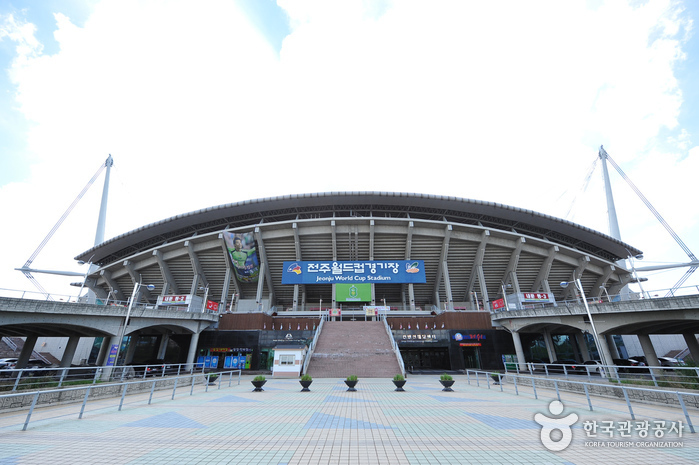
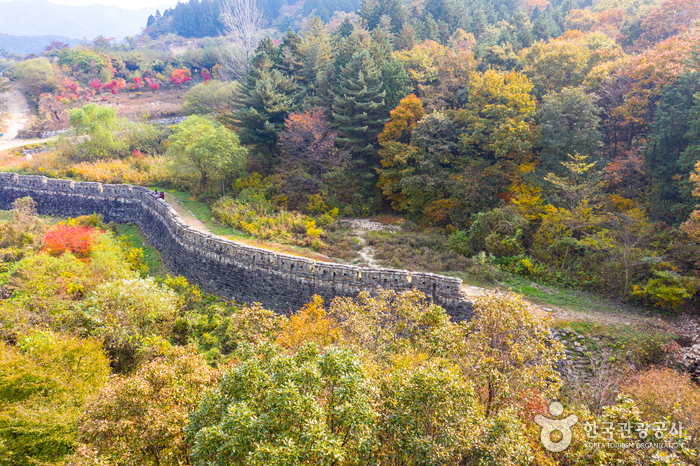
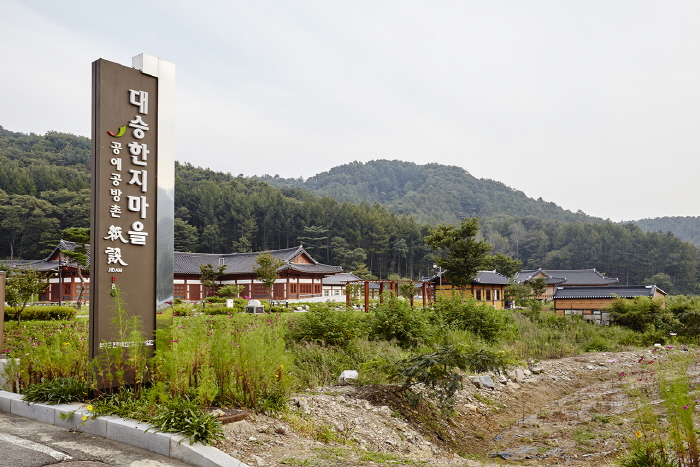

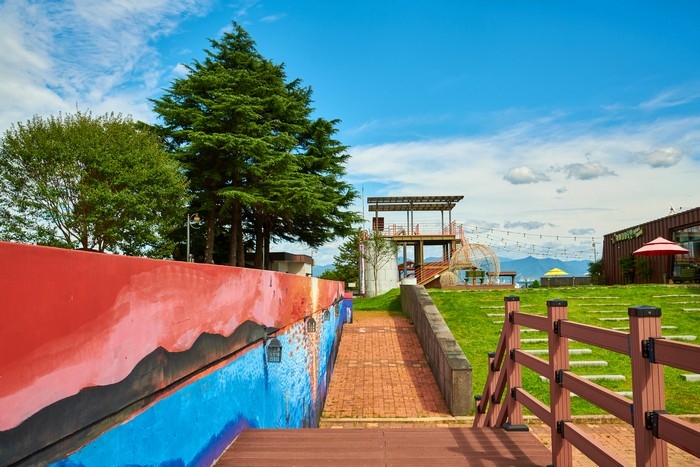
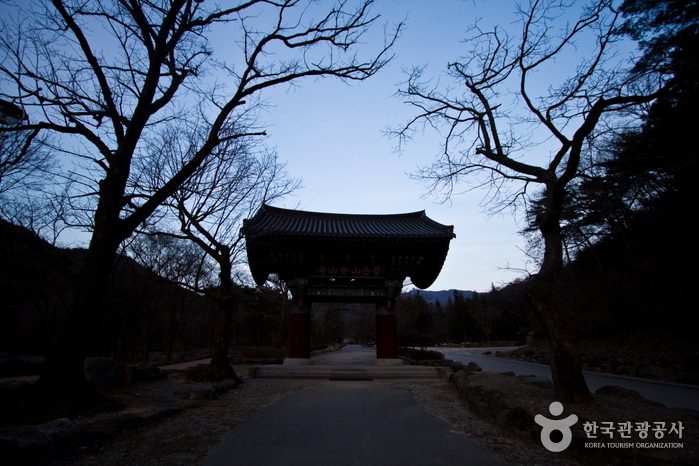
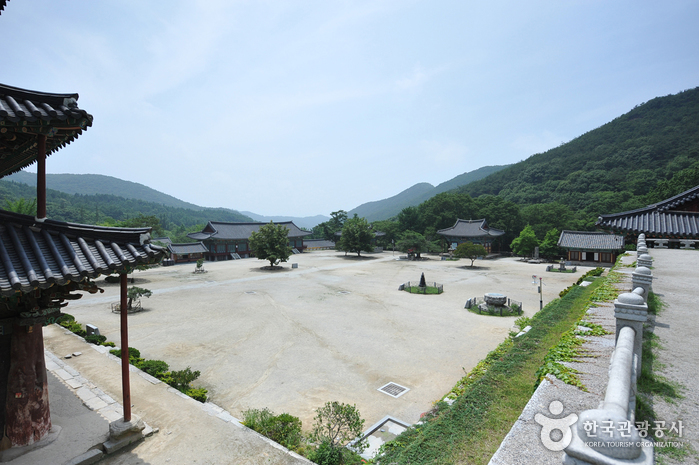
 Español
Español
 한국어
한국어 English
English 日本語
日本語 中文(简体)
中文(简体) Deutsch
Deutsch Français
Français Русский
Русский